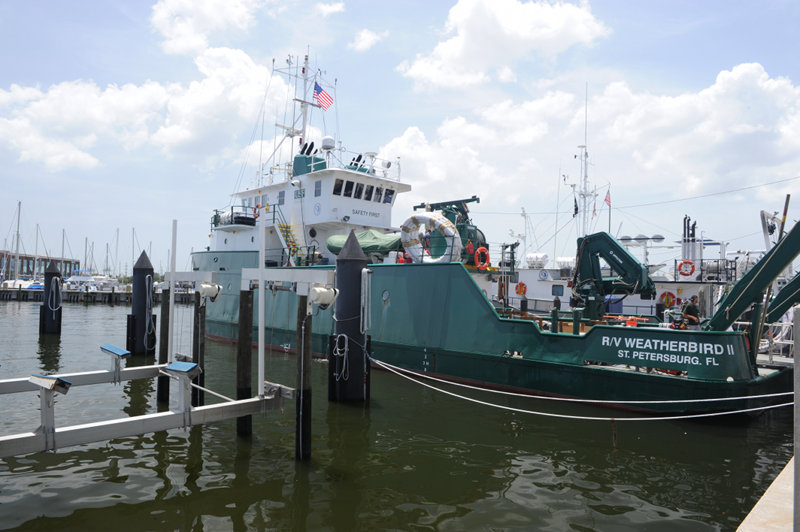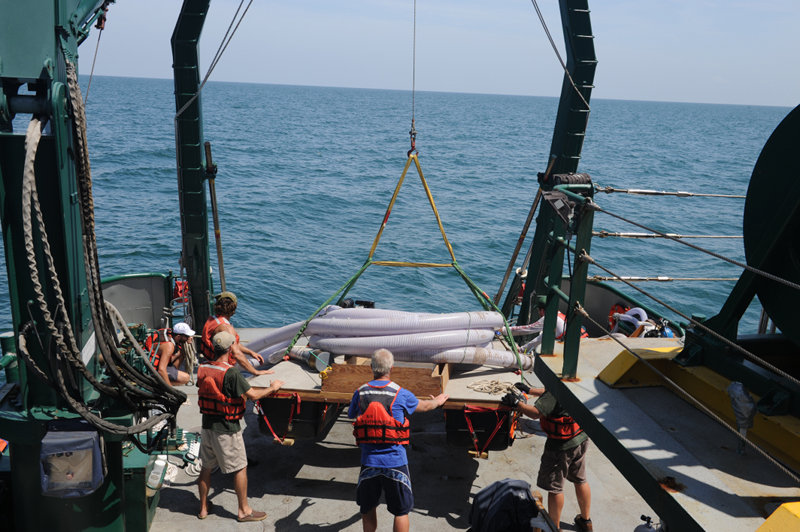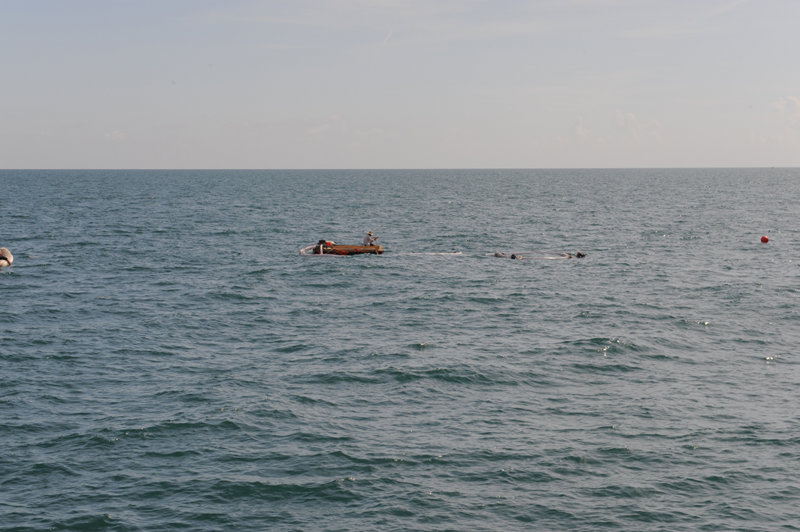
By Kim Smith, Web Coordinator
July 21, 2012

The R/V Weatherbird II dockside in St. Petersburg, Florida. Image courtesy of Exploring the Submerged New World 2012 Expedition, NOAA-OER. Download larger version (jpg, 4.0 MB).
The Brownstone site is of particular interest due to its location along an old river bed and the outcrop of low grade chert, or glassy dolostone, often used by the first Americans to create stone tools and weapons. This is one of many sites originally identified during the 2008 geophysical survey. It was reinvestigated in 2009, and as a result, identified this site as a forerunner in the possibilities of recovering evidence of the Submerged New World.

Crewmembers use the ship's A-frame to hoist the dredge and floating collection screen into the water. Image courtesy of Exploring the Submerged New World 2012 Expedition, NOAA-OER. Download larger version (jpg, 6.0 MB).
In all, July 21st was utilized to orient ourselves with the site, deploy equipment, and establish excavation parameters. A total of three dives were conducted. The first determined that we were, indeed, in the correct location, established a temporary site marker, and identified potential areas to excavate. Prior to Dive 2, the floating dock with dredge was deployed. This system consists of a manmade floating dock with a 6” induction dredge system and removable ¼” and 1/16” hardware cloth screens lain over our permanent ½” screen, for capturing materials spewed up to the dock from the dredge excavations below. Dive 2 focused largely on securing this dock in place by deploying anchors on both the starboard and port sides. The third dive focused on unraveling the dredge hose, moving it into place, and testing it for operations. Overall, it was a successful day.

The floating dock is anchored above the Brownstone site. Image courtesy of Exploring the Submerged New World 2012 Expedition, NOAA-OER. Download larger version (jpg, 5.0 MB).
The key steps to begin excavation have been completed. A temporary site marker and datum post were established; the dock/dredge was placed; and the dredge was made operational. The goals for tomorrow will be to excavate test units (TUs) into the seafloor in search of cultural material below the modern sand and shell. The excavations will be dug by two to four person dive teams with a dive safety officer at the ready at all times. These teams will work together to hand-fan sediment in individual square meter areas into the dredge and up to the floating dock/screens. Scientists manning the screens will carefully scan the debris sent up for rock fragments (debitage) and shells as these are key indicators of the time in which the sediments were deposited.